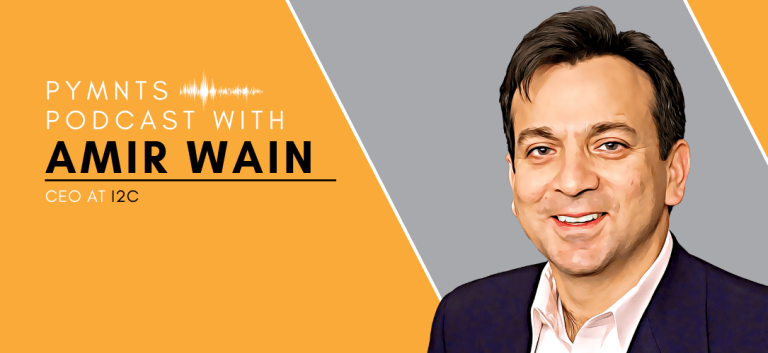
Financial institutions are flagging a bit when it comes to deployment of new technologies and financial products. One reason is infrastructure, where legacy systems hamper results – but mindsets matter, too. Amir Wain, CEO of i2c, weighs in on why it’s crucial to picture the entire consumer journey when embarking on innovative efforts.
Shakespeare once wrote, in words given voice by a gloomy Dane: “The readiness is all.”
So it is with financial services – and so it is, specifically, with innovation within financial services.
After all, ready or not, demand comes for faster payments, for easier onboarding, for digital wallets and security, above all else. And all of it must be available 24/7. For banks and other financial firms, the threat is there: Keep consumers happy … or they will go elsewhere.
In a podcast with Karen Webster, Amir Wain, CEO of i2c, discussed the state of readiness among the top-performing financial sector innovators. As seen in the latest Innovation Readiness Index, produced jointly by PYMNTS and i2c, things – to put it mildly – went south. The study found the portion of FIs that completed innovations early in 2018 stood at 26.7 percent, down a stunning 69 percent from 2017, when 86.7 percent of top-ranked performers were able to complete their innovation-focused projects.
As many as 49 percent said their IT infrastructures were “inflexible,” which meant innovation initiatives were stymied. Said Wain, “I see the results from this survey confirming some of the learnings from the last survey … just because you run an innovation project does not mean the infrastructure is ready for it.”
The ambition certainly was – and is – there. As many as 90 percent of firms invested, or have plans to invest, in consumer credit solutions. Similarly, more than 85 percent noted plans to invest in corporate credit products.
As Wain noted, though credit (as a product) may be in the crosshairs of FIs that yearn to innovate, full integration of credit services spanning both consumer and corporate offerings is necessary – and needs some careful strategy along the way.
“Just a facelift is not enough. Just redoing the UI or adding biometrics to the mobile app are good things to have, but they are not necessarily innovations,” he said. With specific reference to credit, he said it is increasingly hard for traditional financial players to log profits in a world where cash-back offerings and rewards have become the norm and not a differentiator.
“You have to find a population or an application that is not well-served by the traditional big four or five issuers,” Wain said, with an eye on gaining scale and pushing into adjacent markets. He mentioned, by way of example, the attractiveness of offering lines of credit to small and medium-size businesses (SMBs).
The Competitive Landscape
The larger competitive landscape, said Wain, is one that is marked by conventional wisdom, where FIs view their key competitors as other FIs, whether it’s a banking behemoth or the small bank across the street that has a slightly different delivery model.
FinTechs are viewed as collaborators, and per the PYMNTS/i2c research, only 6.5 percent of FI execs see them as competitors. Yet, said Wain, the view of FinTechs by FIs need not be “either/or” – instead, “it needs to be about execution.”
FinTechs, he added, have an incentive to partner with FIs, especially from a regulatory perspective. At this point, some of the tech-nimble upstarts are several times the size of their more traditional FI brethren, but it takes time to get a banking license, so it makes sense for them to find value in linking with FIs. Conversely, FinTechs will not and do not have the infrastructure limitations that FIs grapple with (for proof of this, just refer back to the latest Innovation Readiness Index).
The discussion swung to the recent mega mergers that have dominated the payments space, with deal-making in the tens of billions of dollars, eyeing cross-border transactions and a continuum of services across issuing, acquiring and processing.
Take your pick among the Fiservs, the Worldpays, the Earthports … the overarching theme seems to be scale, said the executive. And while the ambition may be to bring all types of services and operations under one umbrella, Wain said the reality of integrating all of these far-flung parts of the payments spectrum may prove to be a challenge. “If you look at how quickly these transactions followed one another, it seems like it’s a case of ‘I don’t want to miss the race.’”
The mindset underpinning these mergers, he said, should not be one of “too big to fail, but rather too good to fail.”
To get to that “too good to fail” level, he said, “at the end of the day, the best place for innovation is at the platform level.” After all, consumers now expect their cards to work anywhere. Thus, standardization is also a key to innovation, because the “one-off specialized customer experience never really ignites … with an open standard,” Wain said of payments stakeholders. Regardless of whether they are FIs or FinTechs, “we can build on each other’s innovations.”
In the end, he said, no matter the innovation desired, “you need to think through the entire user journey, the efficiencies gained by the organization, and you need to think about the meaningful outcome for your consumers.”